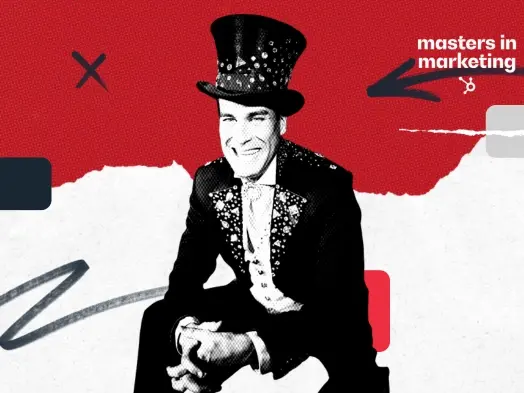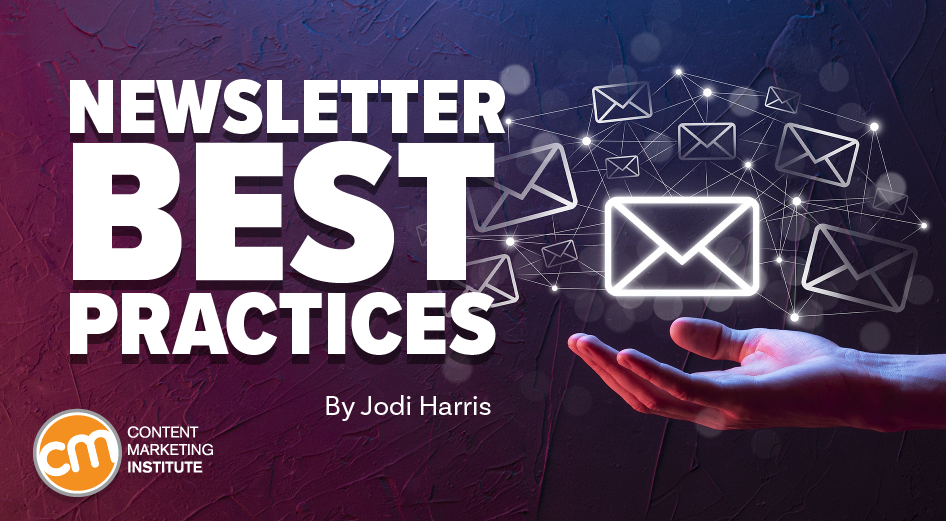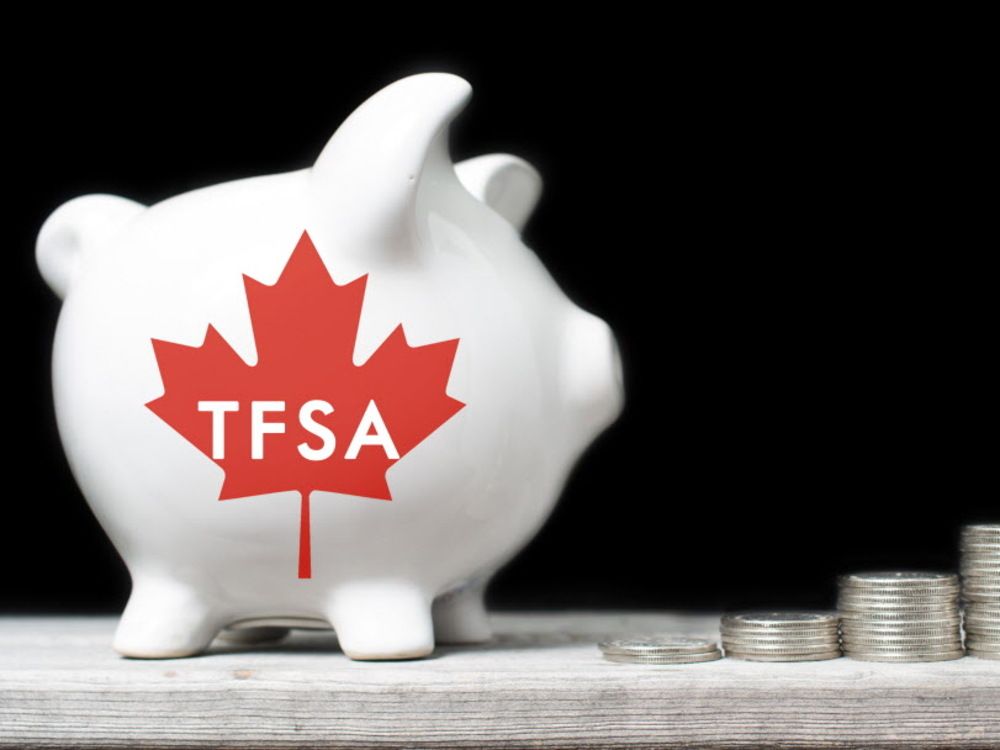Trendy content marketing formats and platforms can come and go. Today’s TikTok campaign is tomorrow’s “Remember when …?” But one format has stood the test of time — email newsletters.
Newsletters offer plenty of marketing appeal, helping brands build a subscribed audience of consumers who want to hear from your business. They’re also relatively easy and cost effective to produce, especially for teams using AI and other marketing automation tools.
Those advantages may be why 71% of marketers distribute digital newsletters, according to CMI’s latest B2B Benchmarks, Budgets, and Trends research.
To enhance your ability to deliver a satisfying newsletter experience that drives your marketing goals, we’ve gathered examples and best practices. Each is a winner or finalist for Best Digital Newsletter at the 2024 Content Marketing Awards.
(Though the CMI staff and community admire many creator-driven newsletters, I’ve focused on examples from brands, nonprofits, and agencies in this article.)
If you want your subscribers to look forward to opening and reading your newsletter, optimize your content for these five elements:
1. Readability
Time-constrained audiences scan newsletters for exciting ideas and relevant information rather than reading from start to end. To make that easier, use short sentences and paragraphs to get your message across. Use brief, catchy headlines and descriptive subheadings to highlight critical insights and recommended actions. Videos and images can also break up lengthy sections of copy and contextualize your messages.
Example: BDH Solutions
BDH Solutions provides business services for real estate principals, including landlords, property managers, and investors. Transactions between vendors and buyers in this space can be highly complex, which is all the more reason for BDH to communicate with the utmost clarity and simplicity.
You won’t find fancy bells and whistles in the company’s bimonthly newsletter. That’s by design.
Each issue is limited to an opening image (such as the waterfront property in the image below), two property listings, and a brief summary of and links to two industry-relevant news articles (not shown). In this version, a personalized intro to the recipient Camille includes some thoughts from CEO Ross Hedditch about his outlook for the coming year.

Subheadings appear on a green-colored banner (shown in the “Top Listings” header above), visually separating each section of concise, easy-to-read content.
In the Top Listings example, an image of the property’s charming location in the northern suburbs of Melbourne, Australia, does most of the talking. The accompanying copy focuses on top-line details, such as the unique opportunity to purchase or rent, the number of residential (364) and commercial (14) units in the parcel, and a characterization of the current tenancy (“Established agency located in a commercial hub with premium offices and a marketing catchment area of approximately 20,000 residents”). A hyperlinked call to action for more information facilitates a direct conversation with Ross.
The newsletter may be simple, but the thinking behind the development of this Content Marketing Award finalist was anything but. BDH’s agency partner, The Brilliant Content Agency, applied psychology principles such as the priming effect during copywriting (note how the CEO introduction uses word association to define “a disconnect in expectations”) to optimize engagement, enhance reader comprehension and recall, and elicit the desired action.
2. Storytelling value
While brevity works for some, deep-dive storytelling might help your brand newsletter stand out from the pack — especially if you let the action unfold within the body of the newsletter instead of requiring a click to read more.
Long-form newsletters work best when they carry readers beyond the headlines, immersing them in a relatable story that sparks empathy. Storifying your content also creates a richer, more engagement-worthy experience that subscribers can anticipate and enjoy.
Example: Aksha Dialogues
Aksha Dialogues is a monthly newsletter created to share knowledge and technical expertise from Aksha, a health and development initiative in India from the Bill & Melinda Gates Foundation. Its marketing goal has always been to share the foundation’s ideas, innovations, and solutions. Yet, its content lacked the ability to advance crucial conversations around its efforts.
Marketing agency Gutenberg helped address that shortcoming by revitalizing Aksha Dialogues from a text-based publication to one that features impactful images and video links that reflect a diversity of voices and convey the richness of the foundation’s subject matter expertise.
Evidence of this is shown below. The newsletter title in a banner is set against a striking image of sanitation workers in India wearing protective masks and hard hats. The thumbnail image attracts readers to view the accompanying video by representing residents who have benefitted from the Swachh Bharat Mission featured in the newsletter.

Among the newsletter’s distinguishing features is a full-length article (a portion is shown above), contrasting the typical newsletter approach of posting a brief teaser and a CTA to read more. Further, the content emphasizes first-person accounts from the foundation’s partners and collaborators. It contextualizes technical aspects of the foundation’s work and its positive impact on the health and well-being of people in India.
Its real-world storytelling enhances the content’s emotional resonance and potential to drive deeper engagement. For example, one section of the story (image below) discusses a community ownership initiative (as indicated in the subheading) aimed at ensuring dignified livelihoods for sanitation workers and benefits for their families in the India city of Pune.

As the newsletter feature explains, old buses are being repurposed as mobile toilet integration centers, giving women from lower-income households more reliable access to affordable and safe sanitation and hygiene services. More than 200,000 women and girls in Pune, Hyderabad, and the Andaman Islands (some shown in the photograph) have benefitted from these centers.
3. Reader focus
Successful newsletters deliver the information and answers your audience wants — not your brand’s messages and self-promotional gimmicks.
To clearly focus on what readers want, the content should be relatable, conversational, and personally relevant. It should be organized to enable readers to explore and engage with topics they’re most interested in.
Example: The Exchange
For over a decade, the University of British Columbia Okanagan campus (UBCO) produced The Exchange to share updates and events with faculty and staff.
However, a 2023 internal communication strategy review revealed the need for a refreshed approach to improve the content’s usability, audience value, and engagement potential. Additional insights uncovered through staff meetings and surveys led the content team to implement two significant changes that sharpen the newsletter’s focus on reader needs and foster a more dynamic connection to campus life.
First, it increased the distribution frequency from biweekly to weekly. Second, it redesigned the newsletter to give it a cleaner, more uniform aesthetic that better serves the informational needs of its audience.
Newsletter content is organized under easily identifiable categories — such as “Your Well-being” and “Teaching and Learning.” The added transparent navigation helps readers quickly find relevant news, digest it at a glance, and act on its recommendations.

The screenshot above shows one section — Our People — that highlights a broadly relatable story about the campus security team’s actions to guard the campus during a wildfire threat (with a linked CTA to read the full story).
The Exchange also serves more specialized reader interests. For example, staff members seeking a new role at the university can consume the section with current job postings linked to the full descriptions.
4. Clear calls to action
While your newsletter content should be engaging, it must also serve a business purpose. For that to happen, be direct about your brand’s valuable offerings.
Include compelling calls to action to guide subscribers toward the next steps your business wants them to take, such as contacting your sales team for a demo, signing up for a webinar, participating in your social media community, or supporting internal initiatives.
Make sure to design CTAs so they’re easy to spot. Keep the copy brief and to the point. You want readers to understand what they’ll receive when they click and how they stand to benefit.
Example: Loglines
If you think managing an enterprise content marketing engine is intimidating, consider the sheer scale and volume of information that a media brand like Paramount is charged with distributing externally and internally.
Keeping an estimated 30,000 staff members informed on the company’s latest strategic priorities, content successes, press events, and internal initiatives is no easy feat. With Loglines, Paramount aggregates all those data points into one weekly employee newsletter without diminishing the information’s utility or reader impact.
Like the BDH Solutions newsletter, Loglines eschews fancy layouts and multimedia features in favor of clear, direct communication. Given the sheer volume of initiatives, it has to.

But what the newsletter lacks in design sophistication, it more than makes up for in sound information architecture. Readers can easily learn about — and act on — required company procedures, as well as take advantage of benefits and special opportunities.
At the top of each issue, recipients find a timely greeting (here, it marks the first day of spring for those who live in the Northern Hemisphere) atop a simple list that notes the week’s featured story about Bob Bakish, along with current screenings (Diarra From Detroit and the CMT Music Awards), a featured event (Paramount @ SXSW), and other happenings (George Cheeks’ appearance about CBS’s future and the company’s mention on the Adweek Hot List). Rather than requiring readers to scroll through pages upon pages of content, anchored links provide direct access to any section.
The information in those sections drives further awareness of happenings and enables Paramount’s internal audience to fulfill relevant responsibilities.

For example, employees can navigate to the Good Housekeeping section (shown above) for a clear overview of the week’s critical business-related requirements, such as setting annual goals. To help activate that task, Paramount includes a link to a helpful resource.
Paramount also benefits by empowering staff members to support its shows (attending a taping of The Daily Show), events hosted by its departments (Black History Month events hosted by its BEAT-ERG team), and corporate initiatives (the student-focused ArtsMatter forum). It also pursues that goal by including clear CTAs for each initiative with links for additional information and instructions.
5. Attractive, user-friendly design
Don’t frustrate readers by delivering great content in an ugly, cluttered, or difficult-to-navigate package. Follow SEO and design trends to draw audience attention, but don’t forget the fundamentals of a good — and accessible — user experience.
For example, use appealing, readable fonts and colors. Include images and subheadings to break up dense sections of text. Organize your information so that it’s easy to scan.
Example: The Edit
Like many companies in the energy sector, Sweden-based global electric services company Vattenfall recognizes the importance of reducing global reliance on fossil fuels. The Edit newsletter is among the ways the company communicates its commitment to that goal — and enlists the assistance of engaged community members.
The Edit team curates a mix of article summaries, quick news flashes, and industry insights to inspire and inform Vattenfall’s community. To enhance trust and engagement, the company pays attention to how the newsletter communicates visually.

For example, the large, sans-serif type in the newsletter title and subtitle (“Your monthly briefing on the journey to fossil freedom”) and a simple, soothing color palette give the content a clean look. Within the brief copy for each article, helpful subheadings point out key insights (“What to know” and “Why it matters”), making the content easy to grasp in a quick scan.
Further, each newsletter opens with a friendly “Hello!” and feel-good message related to the month’s topic. For example, an issue focused on biodiversity (shown above) celebrates good news on the topic: “The flight paths of thousands of birds were tracked by radar and cameras at offshore wind turbines for two years — and not a single bird collided with a blade.” Relevant, eye-catching visual imagery (birds photographed in mid-flight) complements each story, though the layout leaves plenty of white space to minimize eye fatigue.
The combination of valuable content and an attractive layout helped The Edit earn audience trust and the 2024 Content Marketing Award for Best Digital Newsletter.
More tips to make readers’ experiences seamless and satisfying
Implementing those five essential elements will give your newsletter a strong foundation. But they aren’t the only best practices to consider. Keep an eye on these:
- Make a good first impression: People build trusted relationships with people, not faceless corporate entities. Put a familiar name in the “from” line to make your messages warm and welcoming. Similarly, use your subject and preview line copy to pose a timely question or share a relatable point of view that compels readers to open up and explore your content.
- Offer flexible subscriptions: Give subscribers a way to select the content they want (or don’t want) to receive. For example, offer a weekly digest as an alternative to daily alerts. But always make it simple if a subscriber decides to opt out entirely.
- Be transparent: Outline what your readers will receive when they sign up, especially if you have multiple newsletter offerings and subscription options. Even better: Provide a sample newsletter for preview so potential subscribers can see the value for themselves.
- Stay on readers’ minds: Send newsletters consistently, ideally on a day and time proven effective in your industry or tested with your audience. For example, 49 North Digital founder Sally Howard says her newsletter testing has shown B2B enterprises should avoid mailing on Mondays and Fridays because business audiences are more likely to be distracted. Small retailers should send on Friday evenings to entice weekend shoppers.
- Make it mobile-friendly: People read newsletters on their phones (maybe even more than on desktops). Check how your newsletter looks on mobile devices to ensure optimal viewing across screens.
- Use personalization: If consumers share personal data on your subscription form, put it to good use by customizing what they receive. Even something as simple as addressing them by name in a warm, friendly tone can help your content feel more like a personal conversation than an email blast.
Create reliable connections the ‘old-fashioned’ way
Newsletters may not be as sexy as 30-second videos that go viral on YouTube. But these compelling examples should more than convince you of the value of keeping newsletters at the top of your marketing mix.
Got an example of an email newsletter you love? Drop me a line — I’d love to hear about it.
Updated from a January 2023 article.
HANDPICKED RELATED CONTENT:
Cover image by Joseph Kalinowski/Content Marketing Institute











